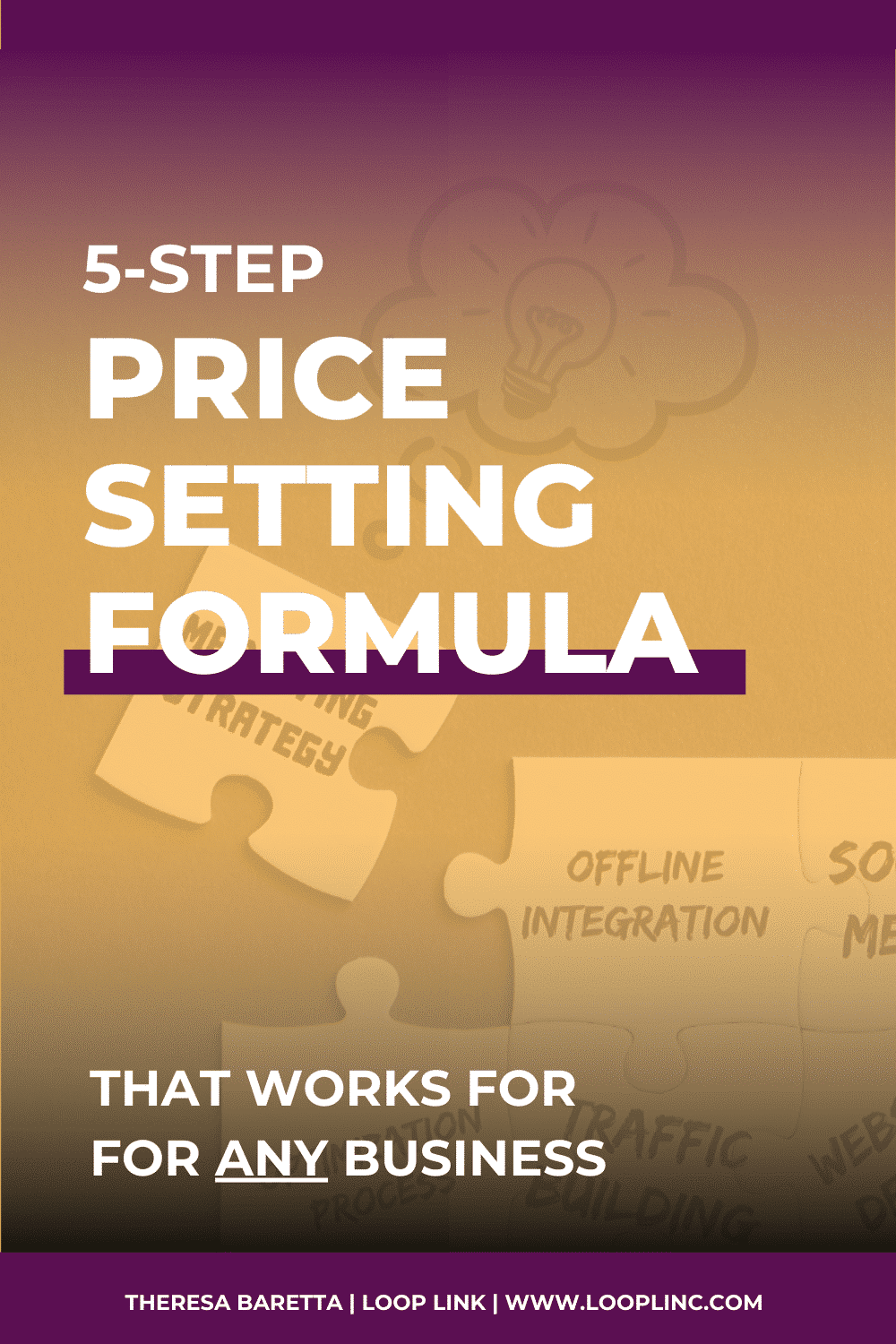The Only Pricing Strategy Guide You’ll Need to Set Profitable Packages for Your Business
I’ve met with several business owners owners over the course of my career that set their prices using pure speculation. They came up with a number that “seemed right” and went with it. Just like that.
If you clicked on this blog post, you may have taken this approach to price setting yourself.
Perhaps you know that having a pricing strategy is beneficial, but you don’t know where to begin or what data to base your decision on.
Or maybe you have a strategy, but it isn’t generating the financial gains you thought it would, and you know improvements must be made.
First of all, let me start by saying you aren’t alone.
Hundreds of thousands of business owners fall victim to pricing mistakes each year, for a wide range of different reasons. Some follow ill-conceived advice, some base their prices on the cost of making a product without considering the customer’s perception of the product’s value, and others simply fail to manage their internal operations in a way that makes their pricing model sustainable.
It’s all part of the life-long learning process every entrepreneur has to endure.
But there is a silver lining— business owners can re-establish and optimize their pricing strategy at any time.
And it gets even better!
I’ve reduced the process of price setting down to five simple, actionable steps.
All it takes is a little focus, some brow sweat, and a few dedicated hours.
If you’re willing to do what it takes, I’m confident that today’s post will help you solidify each component of your pricing model and achieve your revenue goals.
The Five Step Price Setting Formula

1. Align with Your “Why”
One of my primary responsibilities as an Operations Coachsultant™ is helping entrepreneurs reconnect with the “why” of their business. I believe feeling strongly tied to our “why” helps us become more productive as leaders, and that this productivity transfers into our business as a whole.
This same concept can be applied to pricing strategies.
You must consider your “why” when establishing the costs of your goods or services.
You can do this by asking questions like:
- Why would my target market pay this price for my product/service?
- Why is my product/service better than that of my leading competitor(s)?
- Why is this price optimal for my target audience?
2. Survey Your Market
By keeping the people you serve and “why” you do what you do at the center of your pricing strategy, it will align with your mission and vision in a seamless and consistent way.
This step is just as important as the first. Even if you’ve aligned with your “why”, there’s a chance your ideal customer may have a different perspective. I often use real estate as an example when explaining this step.
We’ve all dealt with (or heard about) overly-attached homeowners who base the value of their home on their own emotional ties— a practice that results in an asking price potential buyers aren’t willing to pay.
This is one of the most common pricing mistakes, both in real estate and other industries.
It’s not unusual for a business owner to be overly-confident in their price point. After all, no one is more passionate about a product or service than the person who created it.
But you can’t rely on your judgment alone.
You must ask for feedback and gather quantifiable evidence. This is one of the most important factors to consider when setting price. Without it, you can not create a reliable strategy.
3. Resolve a Pain Point
People are willing to pay for solutions to problems they are facing.
They’ll pay even more for an immediate solution. Or a convenient one.
And they’ll spend the most on a proven solution. One that has positive testimonials from previous clients/customers, has been favorably reviewed by reputable sources, or has been backed by case studies and research.
Thus, as CEOs and entrepreneurs, it is our responsibility to ensure our products address the problem and bring the necessary value.
There are three key ways to achieve this:
- Beta testing with a small group
- Create and implement a quality assurance framework (No more than 4 or 5 steps.)
- Make your solution SIMPLE to use
4. Develop a Customer Success Plan
These processes will ensure your product/service meets the needs of your ideal customer, maintains consistent quality, and delivers an ideal experience every time— validating your price and securing you buyers.
A customer success plan is an essential part of knowing how to develop a pricing strategy.
What is a customer success strategy? In a nutshell, it’s a step-by-step plan for delivering quality to your customers throughout their entire life cycle.
How does it impact your pricing strategy?
For starters, it will provide you with more opportunities to up-sell the customers you already have, since people are more willing to invest if your product/service is benefiting them and they’ve have a positive experience with your business.
It will also improve your retention rates, elongating your average lifespan per client. This means you won’t have to worry about making new sales as frequently— a great thing, since cold leads spend the least.
A client success plan should include:
- A time line for how long it will take clients to receive their first value from your service
- An on-boarding process
- A clear customer journey path
5. Employ Value-Based Pricing
As an Operations Coachsultant™, I am passionately in favor of value-based pricing.
It isn’t necessarily the best pricing strategy for every business (those manufacturing a product for retail, for example, may benefit more from cost-based pricing), but when it works (and it does in most cases), it works wonders.
Value-based pricing is all about the perceived value of your product or service.
Essentially, your clients are paying you based on the result they’ll receive, not the cost you incur for making that result possible.
Take Ferrari, for example. Their cars are highly-desired by auto enthusiasts based on the unparalleled performance, industry-leading acceleration, and elite driving experience they provide.
Ferrari owners pay in accordance with the luxury, speed, and status they receive. The cost is not contingent on how much Ferrari spends to produce the car.
This same method can be applied to smaller-scale ventures. And it’s an excellent way to increase profitability and ensure you are being adequately compensated for your skill, knowledge, and level of efficiency.
I highly encourage you to review these five steps each time you evaluate pricing, whether it’s revamping your entire pricing strategy or adjusting a single component. Interested in learning other ways to optimize your business? Check out my latest YouTube video for more tips!
Your Move
Unsure how to implement these solutions within your team?
Do you need an extra hand with team management?
Come over to our Free Exclusive Community where you can find support from other CEOs on the same journey.




